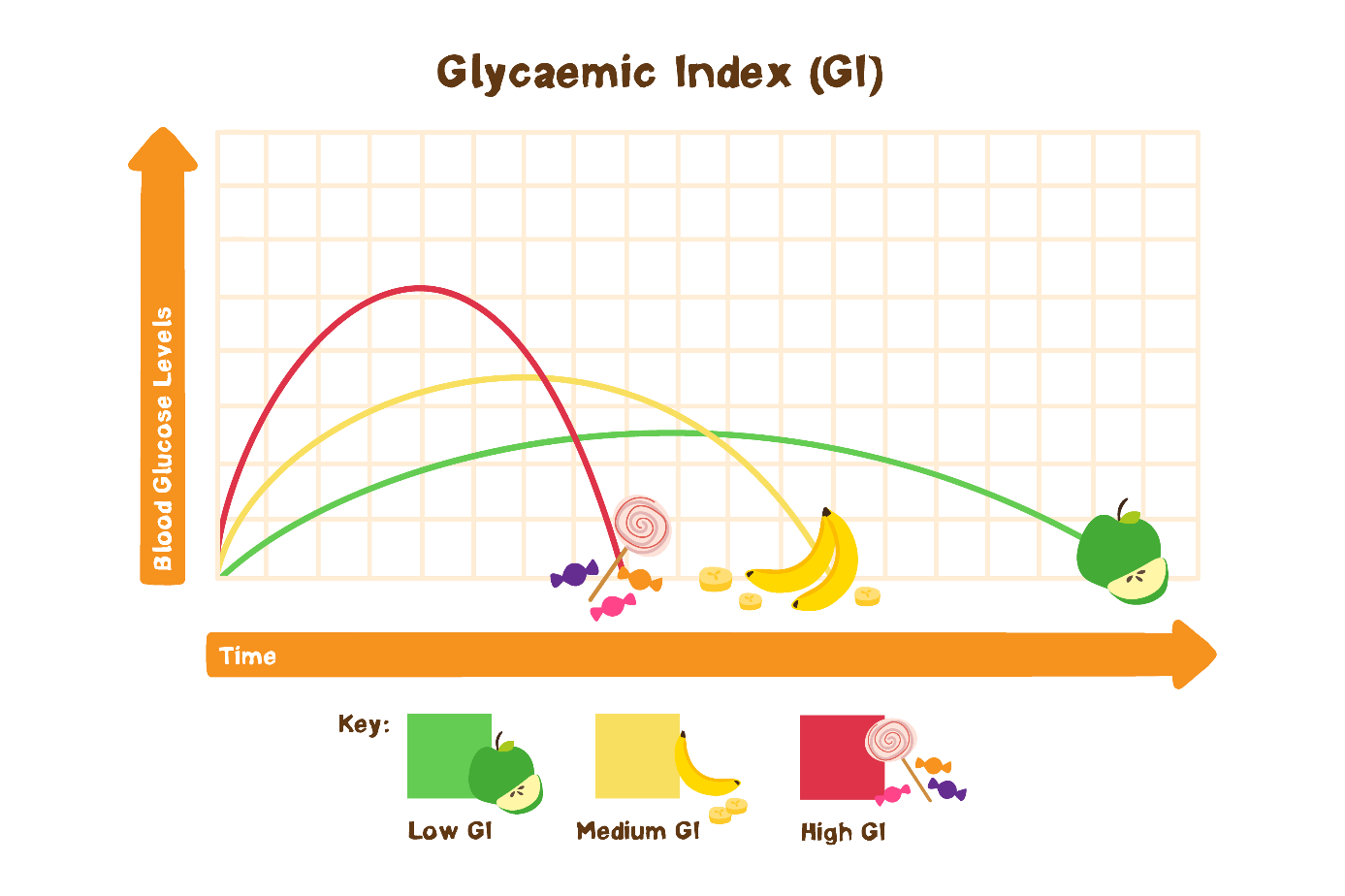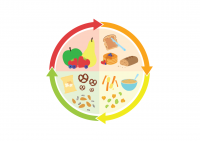Children have high energy requirements to support their growth and daily activities. Growth spurts are usually easy to spot as they constantly ask for food and seem to have hollow legs! They rely on energy from carbohydrate as its nature’s primary fuel. They can obtain this fuel from lots of different foods in the diet but the form in which it comes can impact what happens inside their bodies. This can have a knock-on effect on their energy levels and behavior. Let’s take a closer look at how we might be able to support them to fuel well with a bit of insight into the glycaemic index or GI.
What is GI?
Glucose, which is carbohydrate in its simplest form, is the preferred fuel for our brain, red blood cells and the main source of energy for muscles during strenuous exercise. As parents we also need carbs! Whether we’re wrestling our offspring into bed, keeping up with their after- school activities and social events or simply fueling our brains to multi- task and complete the never ending to do list, it is essential.
Carbohydrate is found in a variety of foods; it is the starchy part of foods like rice, bread, pasta and potatoes. It is the ingredient that makes foods taste sweet. It is naturally occurring in fruit or milk for example or it can be added to foods and drinks as refined sugars, where it is then classed as free sugar (to find out more on naturally occurring and free sugars head over to my previous post). Not all carbohydrates are created equal and it is important to consider their impact on the body as they are digested and that is where GI can be useful. GI is a way to rank foods according to how the carbohydrate in them affects blood glucose levels. Foods with a high GI are characterised by fast-release carbohydrates and higher blood glucose levels. Foods with a low GI have far less impact as glucose is released more slowly into the blood stream.

A GI value ≥70 is considered high, a GI value 56-69 inclusive is medium and a GI value ≤55 is low (where glucose = 100). An apple for example has a GI of 39, whereas fruit gum sweets are 70. It’s important to note though that GI alone is not a measure of how healthy a food is, just how slowly or quickly it is digested. Some fruit for example watermelon has a high GI, and chocolate is low because the fat alongside the carb will slow down how quickly the carb is released.
Behind the scenes is insulin, controlling what happens to the glucose once it is the bloodstream. Foods with a high-GI require more insulin to control the higher peak in glucose levels. Ideally, we want to avoid lots of peaks and troughs in our blood glucose levels as it can affect energy levels. We may notice these effects if our children have had lots of quick release high GI carb snacks; rushing around causing chaos at a party one minute, then claiming they have no energy to walk from the car to the house on their return! Snacks with a low GI are broken down more slowly and can therefore help to regulate energy levels across the day. This can be particularly useful for parents. High GI snacks may cause the subsequent crash in blood glucose levels which can create grumpy kids that are difficult to manage! It’s still important to consider how healthy the food is too and its context within the rest of the diet. There’s no doubt though that when it comes to snacking choosing healthy, low glycaemic index foods can be really helpful.






